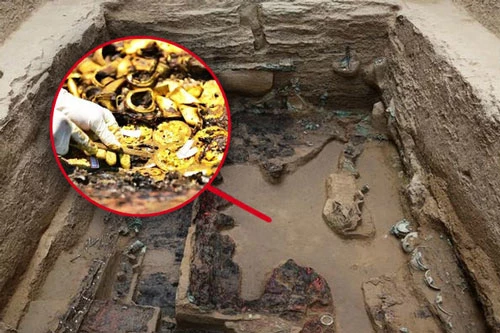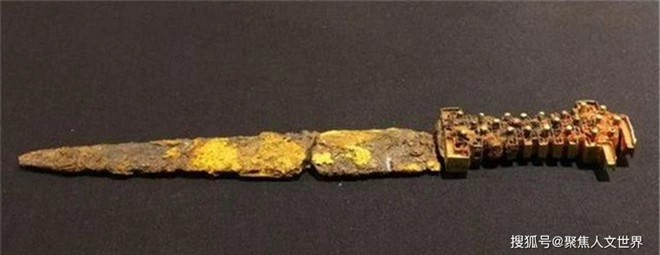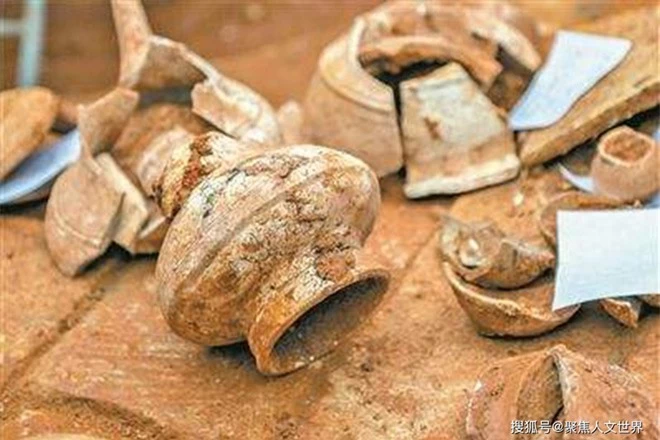Archaeologists found piles of gold, coins, jade, bronze and iron in the tomb. In total, there are more than 200 antiques.
Since the late 19th century, China has excavated many ancient tombs and the cultural relics found have contributed to understanding the gaps in history. One of the famous stories circulated in the archaeological world is the excavation of a 2,600-year-old tomb in Shaanxi province.
 Illustration photo: Sohu
Illustration photo: Sohu
In 1992, receiving news from the public that someone had unearthed an ancient tomb in Baoji, Shaanxi, China, experts immediately went to the scene to check and suddenly discovered that this was just a grave. The small tomb is less than 3m2 . This type of tomb belongs to ordinary people and has little archaeological value.
However, when excavating, what surprised everyone was that this small, modest tomb contained more than 200 national artifacts inside. Archaeologists found piles of gold, money, jade, bronze and iron, more than 200 items in total.
Among these relics, the most surprising is a gold-handled sword with high artistic value. The hilt of the sword is made of pure gold engraved with a winding dragon and iron pattern, and is also encrusted with an extremely delicate green jade pendant.

The sword is kept at the provincial museum. Illustration photo: Sohu
The technology to make this sword far surpassed the technology of civilization at that time. However, the greatest value of the sword lies in the iron body because at that time iron was extremely difficult to refine. This sword indirectly proves that the people of Qin had the ability to make iron from an early age.
Why is a tomb with so many precious treasures so small and shabby on the outside? Who could the owner of the tomb be?
Identity of the tomb owner
Using carbon dating technology, experts were able to determine that by the time of excavation, this tomb had existed for about 2,600 years – that is, since the late Spring and Autumn period. However, inside the tomb there are no epitaphs or documents to prove the identity of the tomb owner.
In the tomb, some items similar to antiques in Tomb of Duke Qin No. 1 (a concentrated martyrs’ tomb) were also found, causing confusion for the archaeological team.
Finally, after careful analysis, archaeologists concluded that the owner of the tomb was a tomb robber . The relics inside the mausoleum come from many different dynasties and are very sporadic, so it is likely that they are stolen burial items.

These treasures are all stolen. Photo: Sohu
Perhaps this tomb robber never expected that one day his tomb would also be excavated like that!
Over its more than 5,000-year history, China’s ruling class and aristocracy have maintained elaborate funeral rituals, including burying valuable items such as jade, bronze, lacquer, and porcelain with the dead. ceramics and fabrics.
Those things speak of the age, class and wealth of the deceased. Along with that is the formation and development of tomb robbers.
Since the 2nd century BC, the phenomenon of grave robbing has appeared and quickly became popular. To fight against these tomb robbers, the ancients found many ways, among which the classics include the trap system or mercury trap in the famous tomb of Qin Shi Huang.
The book series ‘Spring and Autumn Romance’ has detailed instructions on burial methods to protect against grave robbers, but no matter what, the precious items in ancient tombs have always been and will always be attractive to grave robbers. looking to make a profit.





